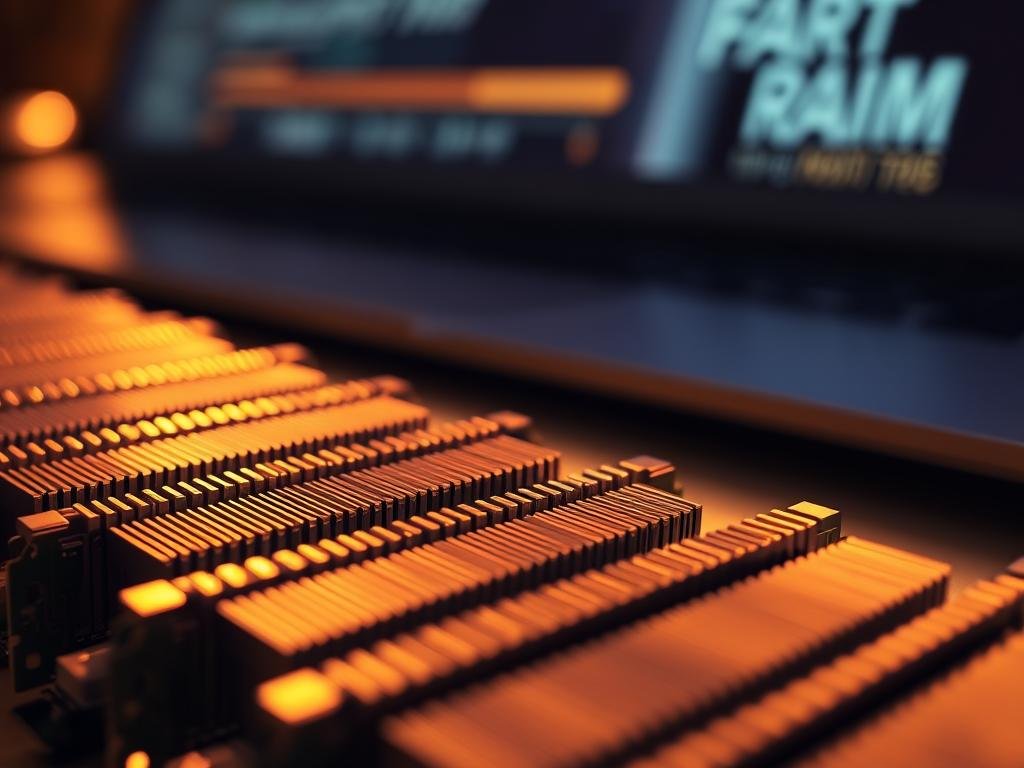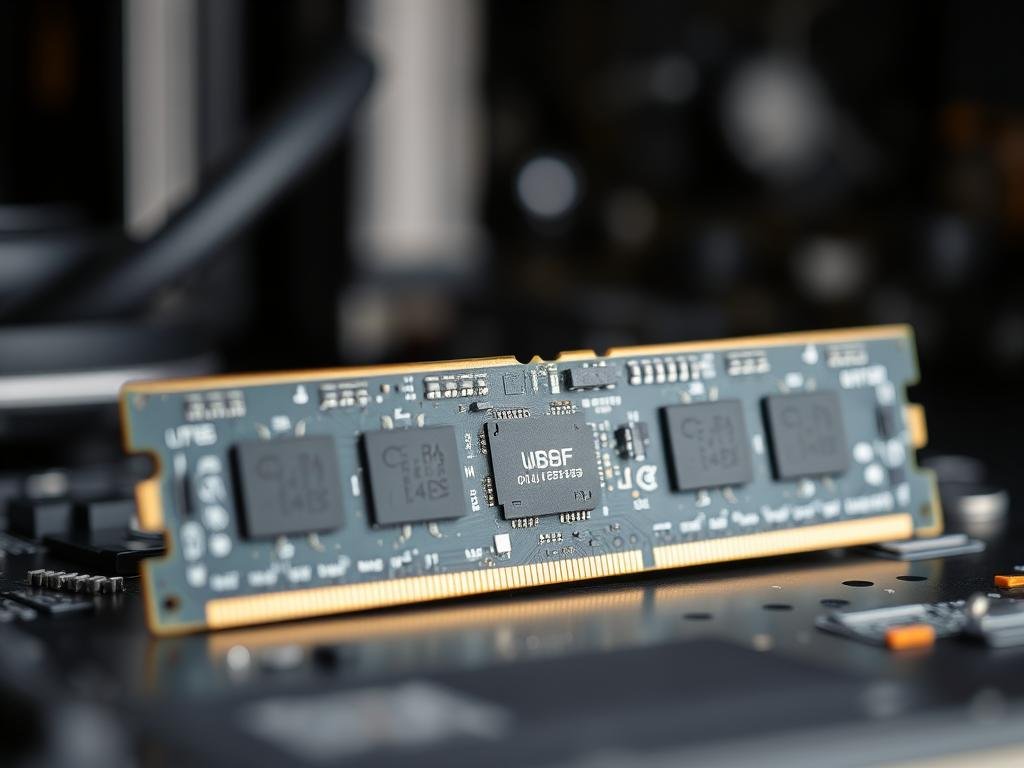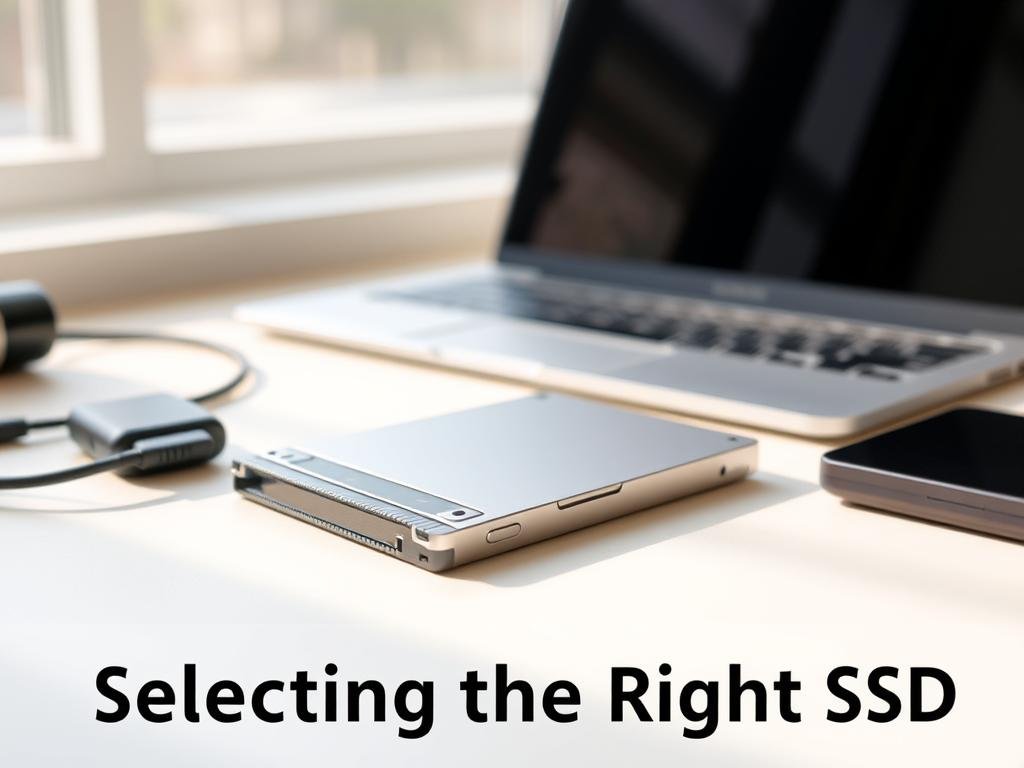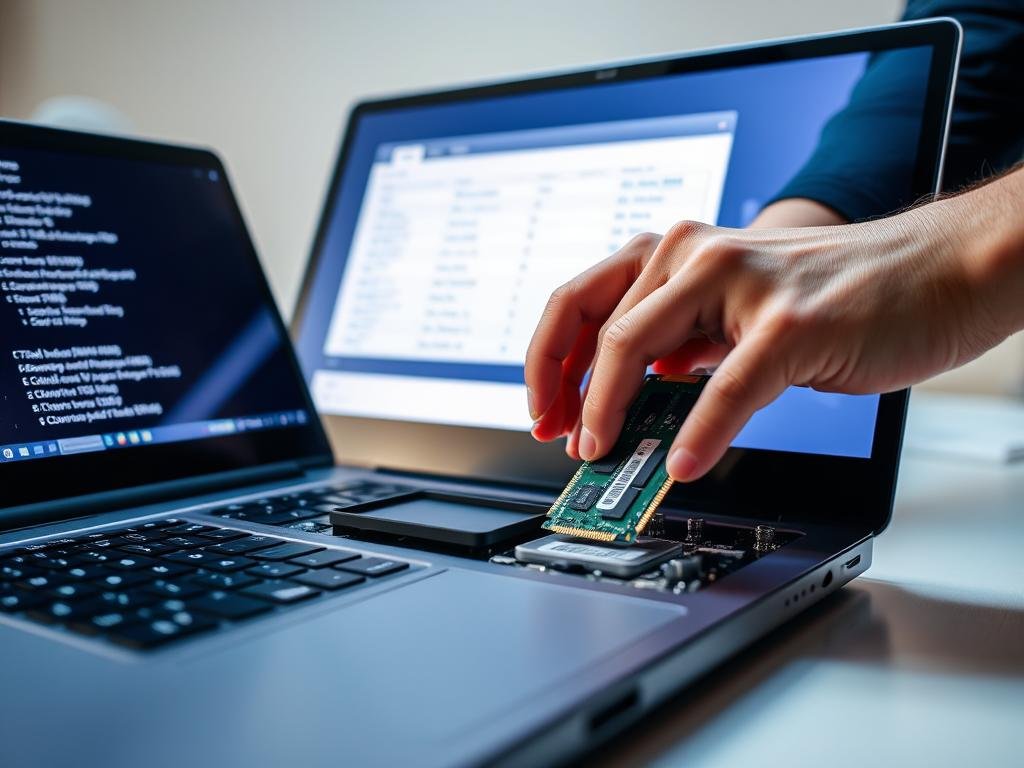Did you know upgrading your old laptop with new RAM and an SSD can make it run faster? An SSD upgrade can make everyday tasks up to six times quicker. This makes it a great choice for anyone wanting to make their old laptop faster.
Laptops can slow down as technology gets better. But, adding more memory and storage can make them run better. If you want to enhance computer speed, check out PC performance optimization tips online.
First, learn the basics of upgrading your laptop. You can find guides on how to upgrade laptop memory. This will help you do it right.
Key Takeaways
- Upgrading RAM and SSD can significantly improve laptop performance.
- SSD upgrades can speed up everyday tasks by up to six times.
- Adding more RAM helps if your system often runs out of memory.
- Enabling TRIM and updating SSD firmware can maintain performance.
- Proper installation of new RAM and SSD is key for the best performance.
Why Upgrade Your RAM and SSD?
Upgrading your laptop’s RAM and SSD can make it run much better. As you use your laptop more, it might start to slow down. This slowdown can happen because of old hardware and new software needs.
Understanding System Performance Bottlenecks
System performance bottlenecks happen when a part of your laptop slows it down. For example, not enough RAM can make apps load slowly and multitasking hard. Also, using an old Hard Disk Drive (HDD) instead of a Solid State Drive (SSD) makes your laptop start up and run slower.
Common bottlenecks include:
- Insufficient RAM
- Outdated storage technology (HDD vs. SSD)
- Resource-intensive applications
Upgrading to an SSD can boost your laptop’s speed by up to 30%. A tech expert says, “The biggest boost comes from switching to a solid state drive.”
“The biggest performance difference comes from switching from a hard disk drive to a solid state drive.”
Common Signs Your Laptop Needs an Upgrade
If you’re seeing these problems, it’s time to think about upgrading:
| Issue | Possible Solution |
|---|---|
| Slow application loading times | Upgrade RAM |
| Long boot times | Upgrade to SSD |
| Difficulty multitasking | Upgrade RAM |
By spotting these signs and acting fast, you can make your laptop run like new. You’ll enjoy a faster and more efficient computer experience.
https://www.youtube.com/watch?v=UrlEtYAnr0w
Benefits of Upgrading RAM
Upgrading your laptop’s RAM is a simple way to boost its speed. This change can make your system faster and more responsive. It makes multitasking easier and improves your laptop’s overall performance.
Enhanced Multitasking Capabilities
More RAM means you can run many apps at once without slowdowns. This is great for users who need to use many programs at the same time. For example, video editors, developers, and gamers will find it helpful.
With extra RAM, your laptop can handle tough tasks better. You can have lots of browser tabs open, work on a document, and stream music all at once. You won’t notice any lag.
Improved Application Load Times
Upgrading your RAM also makes apps load faster. Apps that used to take a long time to open will now start quicker. This makes your experience using your laptop better.
The table below shows how much faster apps load after a RAM upgrade:
| Application | Load Time Before Upgrade | Load Time After Upgrade |
|---|---|---|
| Video Editing Software | 5 minutes | 2 minutes |
| Web Browser | 30 seconds | 10 seconds |
| Game Launch | 3 minutes | 1 minute |
As the table shows, upgrading RAM can greatly reduce how long apps take to load. This makes your laptop more efficient and quick to respond.

Benefits of Upgrading to an SSD
Upgrading to an SSD is a great way to make an old laptop feel new again. It boosts your laptop’s speed and gives you a more stable storage option than traditional hard disk drives (HDDs).
Faster Boot Times and File Access
Switching to an SSD makes your laptop start up and access files much quicker. Unlike HDDs, which use moving parts, SSDs use flash memory for faster data access.
Faster Boot Times: Your laptop can now start in under a minute, unlike HDDs which take several minutes.
Improved File Access: SSDs make apps and files load faster, making your computer work better overall.
| Feature | HDD | SSD |
|---|---|---|
| Boot Time | Several minutes | Under a minute |
| File Access Speed | Slower due to mechanical parts | Faster using flash memory |
Longevity and Reliability Compared to HDDs
SSDs are not just quicker; they’re also more durable and less likely to break down than HDDs. This makes them a better choice for keeping your important files safe.
“SSDs are designed to withstand physical shock, vibration, and temperature fluctuations, making them ideal for mobile devices.”
Choosing an SSD upgrade means you’re not just speeding up your laptop. You’re also picking a storage solution that’s built to last through daily use.
Preparing for the Upgrade
Starting a hardware upgrade needs careful planning. You’ll need the right tools and to back up your files. Upgrading RAM and SSD can boost your laptop’s speed. But, it’s important to do it right.
Gather Necessary Tools
First, collect the tools you’ll need. You’ll need a Phillips screwdriver, an anti-static wrist strap, and your new RAM and SSD. Having the right tools helps avoid damage and makes the upgrade easier.
- Phillips screwdriver
- Anti-static wrist strap
- New RAM modules
- New SSD
Backup Important Data
Before you start, back up your important files. This keeps your data safe in case of an upgrade mishap. You can use an external hard drive, cloud storage, or both for extra safety.
“Backing up your data is like having an insurance policy for your digital life. It’s a precautionary measure that can save you from data loss.”
Cloud services like Google Drive, Dropbox, or OneDrive are good for backups. You can also use external hard drives. The important thing is to have a reliable backup before upgrading.
| Backup Method | Description | Reliability |
|---|---|---|
| External Hard Drive | Physical storage device for backing up data | High |
| Cloud Storage | Online storage for accessing data from anywhere | High |
With the right tools and a backup plan, you’re ready for a successful upgrade. This will not only make your laptop faster but also keep your files safe.

Choosing the Right RAM
Upgrading your laptop’s memory with the right RAM can make a big difference. It’s key to pick RAM that fits your laptop and how you use it.
Compatibility with Your Laptop Model
Make sure the RAM you pick works with your laptop. Look in your laptop’s manual or on the manufacturer’s website. They’ll tell you what type of RAM you need, like DDR3, DDR4, or DDR5, and how much.
Recommended RAM Sizes for Different Uses
The RAM you need depends on how you use your laptop. For simple tasks like browsing and office work, 8GB is enough. But for tasks like video editing or gaming, you’ll want 16GB or more.

| Usage | Recommended RAM Size |
|---|---|
| Basic Tasks (Browsing, Office Work) | 8GB |
| Demanding Tasks (Video Editing, Gaming) | 16GB or more |
Choosing the right RAM can really enhance computer speed and performance. It makes your laptop work better for you.
Selecting the Right SSD
Choosing the right SSD for your laptop upgrade means knowing the differences between various types of solid-state drives.
Types of SSDs: SATA vs. NVMe
SSDs come in different types, mainly SATA and NVMe. Each has its own benefits.
- SATA SSDs use the same interface as traditional hard drives. They are more compatible with older systems.
- NVMe SSDs use the PCIe interface. They offer much faster speeds, making them great for high-performance needs.
When choosing between SATA and NVMe, think about your laptop’s compatibility and your performance needs. NVMe SSDs are faster and more future-proof. But, they might need a newer laptop to work.

Storage Capacity Considerations
Storage capacity is key when picking an SSD. It depends on how you use your laptop.
- If you just browse the web and use office apps, a 256GB or 512GB SSD might be enough.
- For heavy users like gamers or video editors, a 1TB or larger SSD is better. It can handle bigger files and apps.
The best SSD for you will meet your performance and storage needs. It should make your laptop upgrade better for your daily use.
Step-by-Step Guide to Upgrading RAM
To make your laptop faster, follow this easy guide to upgrade your RAM. Adding more RAM is a simple way to boost your laptop’s performance. You just need to find the RAM slots and put in new RAM modules.
Accessing the RAM Slots in Your Laptop
First, make sure you have the right tools and a clean space. To get to the RAM slots, you usually have to take off your laptop’s back panel. Look in your laptop’s manual or on the manufacturer’s website for exact steps, as they can differ.
- Ground yourself to prevent static electricity damage to your laptop’s components.
- Remove the screws holding the back panel in place.
- Gently pry open the back panel to access the internal components.
- Locate the RAM slots, usually marked and easily accessible.
Installing the New RAM Modules
After you get to the RAM slots, here’s how to put in the new RAM:
- Take out any RAM modules by releasing the clips that hold them.
- Line up the new RAM module with the slot, making sure the notches fit.
- Push the RAM module into the slot at a 45-degree angle until it clicks.
- Make sure the RAM module is secure by applying gentle pressure until the clips snap shut.
For more detailed info on upgrading RAM, check out guides on how to upgrade desktop memory. They share similar steps.
Once you’ve installed the new RAM, put back the back panel and screws. Then, turn on your laptop to check if it recognizes the new RAM.
Step-by-Step Guide to Upgrading SSD
Upgrading to an SSD is easy and can be done with basic tools and knowledge. It makes your computer run faster, making it a great choice for those wanting to improve their device.
Finding the SSD Slot in Your Laptop
To start, find the SSD slot in your laptop. Look in your laptop’s manual or on the manufacturer’s website for help. Often, the slot is found by taking off the laptop’s bottom panel.
To locate the SSD slot: Check if your laptop has a special SSD slot or if it uses the same slot as RAM. Some laptops need more work to open, so always follow the manufacturer’s guide.
Cloning Your Old Drive to the New SSD
Cloning your old drive to the new SSD is a good idea. It keeps your data and settings safe. Tools like AOMEI Partition Assistant make this easy, helping you move your operating system, files, and programs to the new SSD.
To clone your drive: Pick a cloning software that works with SSDs. Make sure your new SSD is connected to your laptop, either with a USB adapter or by installing it. Then, just follow the software’s steps to finish.
Once cloning is done, swap out your old drive for the new SSD. This way, you get to enjoy faster performance and quicker loading times.
After the Upgrade: What to Expect
After upgrading your laptop’s RAM and SSD, you’ll see a big performance boost. This upgrade makes your laptop much better. Now, let’s make sure you get the most out of your new device.
Initial Boot and Setup Process
When you first turn on your laptop, it will start up much faster. This is thanks to the SSD upgrade. It might take a few minutes for your OS to adjust to the new hardware.
Make sure you have your OS installation media ready. This is just in case you need to reinstall or fix your OS.
Your laptop should recognize the new RAM and SSD during setup. If you cloned your old drive to the new SSD, everything should be the same. But now, you’ll get faster access times.
Benchmarking Your Laptop’s Performance
To see how much better your laptop is, use benchmarking tools. These tools check your laptop’s speed, memory, and storage. For example, you can use software to compare your laptop’s performance before and after the upgrade.
By benchmarking, you’ll see how much faster your laptop is. You’ll notice better multitasking and faster app and file loading. This is all thanks to the RAM upgrade and SSD. For more info on these upgrades, check out this resource.
In short, upgrading your laptop’s RAM and SSD will make it much faster. By benchmarking, you can see just how much of a difference it makes. This means your laptop will be faster and more efficient for you.
Troubleshooting Common Issues
Laptops can face problems after a hardware upgrade. Knowing how to fix these issues is key. Upgrading RAM and SSD boosts performance but can also introduce new issues.
Failure to Boot After Upgrades
If your laptop won’t boot after a RAM or SSD upgrade, there are several reasons. First, make sure all connections are tight. For RAM, ensure the modules fit well in their slots. For SSD, check that it’s connected right to the motherboard.
- Check for loose connections.
- Ensure the RAM or SSD is compatible with your laptop model.
- Try booting with minimal hardware configuration (e.g., one RAM stick, no external devices).
Resetting the BIOS settings to default can fix boot problems. To do this, enter the BIOS setup during boot (usually by pressing F2, F12, or Del) and choose to reset to default settings.
“The most common cause of a computer failing to boot after a hardware upgrade is a loose connection or incompatible hardware.” –
Recognizing Unrecognized RAM or SSD
Sometimes, the laptop won’t see the upgraded RAM or SSD. RAM issues might stem from incompatibility or wrong installation. SSD problems could be due to a bad connection or the SSD itself.
| Issue | Possible Cause | Solution |
|---|---|---|
| RAM Not Recognized | Incompatible RAM | Check RAM compatibility with your laptop |
| SSD Not Detected | Loose or Incorrect Connection | Verify SSD connection to the motherboard |
If the BIOS doesn’t see the new hardware, try updating the BIOS to the latest version. This can fix compatibility problems.
Fixing hardware upgrade issues needs patience and a methodical approach. By following these steps, you can solve common problems like not booting or hardware not being recognized. This ensures your laptop upgrade goes smoothly.
Maintaining Your Upgraded Laptop
Now that your laptop is upgraded, it’s key to keep it in top shape. Regular care ensures your laptop stays fast and lasts longer.
Regular Software Updates
It’s vital to keep your operating system and software current. Updates fix security holes and boost speed. To update, go to settings, check for updates, and install the latest versions.
- Check for OS updates weekly
- Update all installed applications regularly
- Enable automatic updates where possible
Monitoring Performance Improvements
After upgrading, watch how your laptop performs. Use tools like Task Manager to check CPU, RAM, and disk use. This helps spot any problems or if more tweaks are needed.
By sticking to these maintenance tips, your laptop will stay fast and efficient for years. Regular updates and keeping an eye on performance are simple steps to keep your laptop running well.
Upgrading Other Components
After upgrading your RAM and SSD, think about other parts to improve your laptop. Upgrading can make your laptop run faster and last longer.
Battery Replacement Considerations
If your laptop battery is old or weak, getting a new one is a good idea. A fresh battery means your laptop will work better and longer without needing to be plugged in.
Investing in Better Cooling Solutions
Too much heat can slow down your laptop and shorten its life. A good cooling pad can keep your laptop cool. This helps it run faster and more efficiently.
Exploring these upgrades can make your laptop even better. You’ll enjoy a quicker and more efficient computing experience.
FAQ
How do I know if my laptop can be upgraded with more RAM?
Look in your laptop’s manual or on the manufacturer’s website. See if your model can get RAM upgrades and what kind fits. Check your laptop’s RAM slots to see if they’re open and if there’s room for more.
What are the benefits of upgrading my laptop’s RAM?
Upgrading RAM makes your laptop better at handling many tasks at once. It also speeds up how fast apps start and improves overall performance. This is great for tasks like video editing or running lots of apps at once.
What is the difference between SATA and NVMe SSDs?
SATA SSDs are faster than HDDs but slower than NVMe SSDs. They use the SATA interface. NVMe SSDs, with the PCIe interface, are much faster. They’re best for tasks that need quick storage.
How do I choose the right storage capacity for my SSD?
Think about how much space you need for your operating system, apps, and files. Aim for at least 256GB for your OS and apps. Add more for your files and data.
What should I do if my laptop fails to boot after upgrading the RAM or SSD?
Make sure the RAM or SSD is installed right and BIOS sees it. Try unplugging and replugging them. Make sure all connections are tight. If it doesn’t work, check the troubleshooting guide or contact support.
How often should I update my laptop’s software after upgrading the RAM and SSD?
Update your OS, apps, and drivers often. This keeps your laptop running smoothly and securely. Try to update at least once a month, or set up automatic updates.
Can I upgrade other components in my laptop beside RAM and SSD?
Yes, you can upgrade other parts like the battery or cooling systems. This can make your laptop run better and last longer.
How do I monitor the performance improvements after upgrading my laptop’s RAM and SSD?
Use benchmarking tools to see how your laptop performs before and after the upgrade. Also, watch how your system uses CPU, RAM, and disk space. This helps find and fix any slow spots.
What are the signs that my laptop needs a RAM or SSD upgrade?
Look out for slow app starts, trouble with multitasking, and general slowness. If you see these signs, upgrading your RAM or SSD might help.
